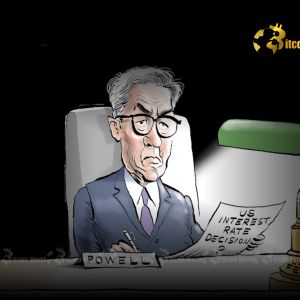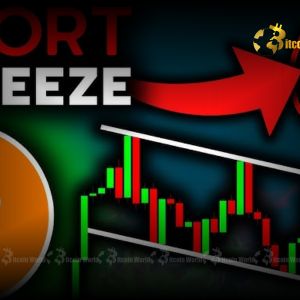BitcoinWorld USD/JPY Forecast: UBS’s Decisive 140 Outlook by Year-End Even if your primary focus is the dynamic world of cryptocurrencies, understanding traditional financial market movements, especially significant currency shifts, is crucial. The recent USD/JPY forecast from UBS, projecting the pair to reach 140 by year-end, offers a compelling insight into the ongoing macro-economic shifts that can indirectly influence every asset class, including digital assets. This prediction isn’t just a number; it reflects deep analysis of monetary policy divergence, inflation trends, and global economic sentiment. Let’s delve into what this means for the global financial landscape and why it matters to you. What Does the USD/JPY Forecast to 140 Mean? The USD/JPY forecast of 140 by year-end signifies a notable strengthening of the US Dollar against the Japanese Yen. For those unfamiliar with currency pairs, USD/JPY represents how many Japanese Yen (JPY) you need to buy one US Dollar (USD). A move from, say, 130 to 140 means the Dollar is becoming more valuable relative to the Yen. This isn’t merely a statistical adjustment; it’s a powerful indicator of underlying economic forces at play between the two largest economies in the world. This target is significant for several reasons: Monetary Policy Divergence: A primary driver is the stark contrast in monetary policies between the US Federal Reserve (Fed) and the Bank of Japan (BoJ). While the Fed has been on a path of aggressive interest rate hikes to combat inflation, the BoJ has maintained an ultra-loose monetary policy, keeping interest rates near zero or even negative. This creates a widening interest rate differential, making the US Dollar more attractive for yield-seeking investors. Inflation Dynamics: Inflation in the US has been persistent, prompting the Fed’s actions. In Japan, inflation has historically been subdued, though it has recently seen some uptick. The difference in inflationary pressures dictates the central banks’ responses, directly impacting currency valuations. Economic Growth Outlook: Perceived differences in economic growth trajectories between the US and Japan can also influence currency strength. A stronger growth outlook for one economy typically supports its currency. Understanding these foundational elements is key to grasping the implications of UBS’s specific USD/JPY forecast . Unpacking the Japanese Yen Outlook : Beyond the Numbers The Japanese Yen outlook is perhaps the most critical component in this equation. For years, the Yen has been known as a safe-haven currency, often appreciating during times of global uncertainty. However, in recent times, its role has shifted due to the BoJ’s unwavering commitment to its Yield Curve Control (YCC) policy and negative interest rates. This stance aims to stimulate the Japanese economy and achieve a stable 2% inflation target, but it comes at the cost of Yen weakness when other major central banks are tightening. Key factors shaping the current Japanese Yen outlook include: Bank of Japan’s Stance: The BoJ remains an outlier among major central banks. Its determination to keep long-term bond yields capped, despite rising global rates, creates a significant yield gap that encourages capital outflow from Japan and into higher-yielding currencies like the US Dollar. Imported Inflation: A weaker Yen makes imports more expensive for Japan, contributing to imported inflation. While this helps the BoJ achieve its inflation target, it also impacts household purchasing power and corporate costs. Trade Balance: Japan’s trade balance can be influenced by Yen weakness. While it makes Japanese exports cheaper and potentially more competitive, the rising cost of energy and raw material imports (priced in USD) can offset these benefits, especially for a resource-scarce nation. The persistence of the BoJ’s accommodative policy is a cornerstone of the current bearish sentiment surrounding the Yen, directly underpinning the USD/JPY forecast . Broader Implications: A Forex Market Analysis Perspective A significant move in the USD/JPY pair, as projected by UBS, has ripple effects across the entire Forex market analysis landscape. The US Dollar’s strength against the Yen is often indicative of broader Dollar strength against other currencies, especially those whose central banks are also tightening monetary policy, but perhaps less aggressively than the Fed. Here’s how a strong USD/JPY can influence the broader Forex market analysis : Carry Trade Revival: The widening interest rate differential between the US and Japan makes the ‘carry trade’ more attractive. This strategy involves borrowing in a low-interest rate currency (like JPY) and investing in a high-interest rate currency (like USD). A sustained USD/JPY appreciation can fuel further carry trade activity, amplifying the Yen’s weakness. Impact on Emerging Markets: A stronger US Dollar can put pressure on emerging market currencies, especially those with significant Dollar-denominated debt. This can lead to capital outflows from these economies, creating financial instability. Global Trade and Investment Flows: Currency valuations impact the competitiveness of exports and imports. A weaker Yen makes Japanese goods cheaper abroad, potentially boosting exports, but it also increases the cost of vital imports, which can be inflationary. Global investors also weigh currency risks when making cross-border investment decisions. Thus, the UBS prediction for USD/JPY is not an isolated event but a crucial piece in the complex puzzle of global financial flows and market dynamics. Navigating Currency Exchange Rates : What History Tells Us Understanding the historical context of currency exchange rates , particularly for a major pair like USD/JPY, provides valuable perspective. The pair has seen significant volatility over decades, influenced by various economic cycles, geopolitical events, and policy shifts. For instance, the Yen saw periods of strong appreciation in the post-Plaza Accord era and during global financial crises when it served as a safe haven. Consider these historical parallels when analyzing current currency exchange rates : Past Interventions: Japan has historically intervened in the Forex market to curb excessive Yen strength. While a weaker Yen is currently desired by the BoJ, rapid depreciation could trigger concerns about import costs and financial stability, potentially leading to future interventions. Economic Shocks: Global recessions, commodity price shocks, and geopolitical tensions have historically led to shifts in safe-haven flows, impacting the Yen’s value. While the current weakness is policy-driven, unexpected external shocks could alter the trajectory. Monetary Policy Cycles: The current divergence is reminiscent of past periods where central banks were out of sync, leading to sustained currency trends. However, these cycles eventually turn, often when economic conditions or policy priorities shift. While history doesn’t repeat itself exactly, it often rhymes. The current situation is unique in the scale of monetary policy divergence, making the UBS prediction particularly noteworthy. Actionable Insights from the UBS Prediction : What Should You Consider? For investors and traders, the UBS prediction of USD/JPY at 140 by year-end offers actionable insights, though it’s crucial to remember that forecasts are subject to change and come with inherent risks. This outlook suggests a continued preference for the US Dollar over the Japanese Yen in the short to medium term. Here are some considerations: For Forex Traders: Those looking to trade currency pairs might consider strategies that capitalize on continued Yen weakness. This could involve long positions on USD/JPY or shorting JPY against other major currencies that are also experiencing tighter monetary policy (e.g., EUR/JPY, GBP/JPY). However, managing risk through stop-loss orders and position sizing is paramount. For Global Investors: The implications extend beyond direct currency trading. Companies with significant exposure to Japanese imports or exports will see their cost structures or revenues impacted. Investors holding Japanese assets might face currency depreciation risks on their returns when converted back to their base currency. Conversely, US dollar-denominated assets become more attractive for non-US investors. Monitoring Central Bank Communications: Keep a close eye on statements from the Federal Reserve and the Bank of Japan. Any hint of a shift in their respective monetary policy stances – for example, the Fed slowing its hiking pace or the BoJ tweaking its YCC policy – could significantly alter the Japanese Yen outlook and the USD/JPY forecast . Economic Data Releases: Key economic indicators from both the US (inflation, employment, GDP) and Japan (inflation, wages, industrial production) should be closely monitored as they provide real-time insights into the health of each economy and potential policy responses. The UBS prediction serves as a strong directional guide, but market participants must remain agile and responsive to evolving economic data and policy shifts. Conclusion UBS’s bold USD/JPY forecast of 140 by year-end underscores the significant divergence in monetary policies and economic conditions between the United States and Japan. This outlook for the Japanese Yen is largely shaped by the Bank of Japan’s continued commitment to ultra-loose monetary policy, contrasting sharply with the Federal Reserve’s aggressive tightening. The implications ripple across the entire Forex market analysis , influencing capital flows, carry trades, and the competitiveness of global trade. While the historical context of currency exchange rates offers valuable lessons, the current environment presents unique challenges and opportunities. For anyone engaged in global finance, from traditional markets to the burgeoning world of cryptocurrencies, understanding this key UBS prediction is essential for informed decision-making and navigating the evolving economic landscape. Staying abreast of central bank actions and key economic data will be paramount in the months ahead. To learn more about the latest Forex market trends, explore our article on key developments shaping currency exchange rates and global liquidity. This post USD/JPY Forecast: UBS’s Decisive 140 Outlook by Year-End first appeared on BitcoinWorld and is written by Editorial Team



















